Susan writes in regarding current practices in psychological assessment for identifying dyslexia. Pam Taylor responds about the criteria involved with assessment.
Hi Susan,
In response to my radio appearance on KCUR, you asked:
I’ve never heard that in the DSM-5, “the APA basically says we have to look for diagnostic certainty for diagnosis and the diagnostic certainty that the APA suggests for dyslexia is below 7%. That means a child has to be profoundly struggling before a psychologist can diagnose with certainty.” (see 28:00) I’m sure what you mean is 7th percentile on scores such as CTOPP, and any other formal tests administered. That seems to be a bit extreme, given that dyslexia is not ALWAYS a profound issue. Is this something that psychologists MUST abide by? You are very perceptive and hit on the crux of the problem when we insist on relying upon current practices in psychological assessment for identifying dyslexia.
Do Psychologists Have to Use the 7th Percentile Criterion?
The APA does insist that low achievement scores below the 7th percentile are “needed for greatest diagnostic certainty.” The APA also recognizes that that certain variables that compound identification and that there is no “natural cut-off point to differentiate individuals with and without specific learning disorders.” So, psychologists can use their “best judgment.” The APA sends a mixed message: On one hand, the APA suggests “diagnostic certainty” and on the other hand, the APA allows “best judgment.” As “best judgment” is a nebulous term, it is easier for psychologists to rely on “diagnostic certainty.”
A psychologist does not have to adhere to scores below the 7th percentile, despite criterion guidelines by the APA. But most do! In speaking with dozens of psychologists, I find they tend to shy away from more independent judgment and are more comfortable relying upon the tangible criterion set forth by the APA. The reasons are two-fold: 1) most psychologists do not receive specific training and assessing for dyslexia and don’t really understand it; and 2) to diagnose without certainty leaves one open to litigious possibilities.
This over-reliance on “diagnostic certainty” certainly explains, in part, why most children remain unidentified with dyslexia. The spectrum of dyslexia is vast and most children with dyslexia do not have profound dyslexia—but would benefit immensely by receiving the proper intervention (which almost no schools offer). By pathologizing dyslexia and insisting on deficit-based identification—and to such an extreme— most children will never be identified.
Identifying Dyslexia Using a Battery and an Interview
Regardless of “diagnostic certainty” of any results, testing should never be used in isolation. The use of any one test, including the CTOPP, is inappropriate. The spectrum of dyslexia is vast and manifests in many ways. Because of this, scientific research supports the use of a battery of testing tools in assessing for dyslexia. Even with a battery, scientific research clearly asserts that reliance on standardized testing alone for identifying dyslexia results in unacceptable rates of false negatives.
In addition to a battery of tests, there should be an exhaustive intake interview that thoroughly attends to patterns of strengths and weaknesses. The Standards for Educational and Psychological Testing, by which all psychologists should adhere, also asserts that it is inappropriate to diagnose or exclude based on testing in isolation and without consideration to the information gathered from this type of interview. Yet, this happens all the time.
The Comprehensive Test of Phonological Processing (CTOPP)
The APA tells us about diagnostic criterion; however, it does not suggest specific instruments by which we obtain those scores. So, even if a psychologist uses a battery and an intake interview, unless they have specific knowledge of and experience in dyslexia assessment, they may be using the wrong instruments or using them in the wrong way.
Tests commonly used to test for dyslexia, including the Woodcock-Johnson and the Wechsler have no clear guidelines in assessing for specific learning disabilities—including dyslexia—and were not intended to diagnose dyslexia specifically. They are designed to get a “general” sense of cognitive abilities. Despite the prevailing use of these instruments to exclude/diagnose dyslexia, scientific research does not support the use of these tests as primary indicators of dyslexia; instead, research supports that the CTOPP is the criterion by which to assess phonological processing and phonological processing is best way to confirm dyslexia—in a battery of tests, complete with a comprehensive interview.
Despite strong support to use the CTOPP in a dyslexia assessment battery, my experience is that most psychologists do not use the CTOPP because it takes too long to administer in a general assessment of learning issues—and not a specific assessment for dyslexia. Instead, assessors will use portions of other assessment tests that are used to diagnose many things other than, or in addition to, dyslexia (like the Woodcock Johnson or Wechsler) or they will only administer portions of the CTOPP.
This selective use of the CTOPP subtests is problematic as it is meant to be taken in its entirety. Although using portions of broader tests or only a few subtests of the CTOPP is more efficient and cost-effective in the psychoeducational process, it does not delve deeply enough into specific aspects of dyslexia to exclude it—and is very limited in confirming dyslexia.
Those who have a nuanced understanding and skill in administering the CTOPP understand that interpretation of the results involves looking for variability—or deviations—in scores. The hallmark of dyslexia is not extremely low scores in a test, or among a battery of tests; rather, the hallmark of dyslexia is an uneven development of language processing skills which is often represented by a scatter among scores. If a practitioner only looks for diagnostic certainty using the CTOPP, they misunderstand the purpose of the test and the assessment of dyslexia.
Should we Diagnose Dyslexia?
Regardless of diagnostic certainty, testing batteries, and interpretation of scores, I still do not feel that it is appropriate to diagnose dyslexia. Dyslexia is a brain difference that exists at a high rate in the population and is associated with many strengths in addition to its weaknesses. When we diagnose dyslexia as a “mental disorder” using the diagnostic certainty criteria for the guidelines of the APA, we perpetuate misunderstandings that dyslexia is an undesirable trait and needs to be cured. We also are unnecessarily insisting in miserable failure in order to receive help.
I understand that the purpose of diagnosing dyslexia is get services through our schools; however, diagnosis is rare—even though dyslexia is not! This problem is further compounded because even with diagnosis, the school services we hope to get through this diagnosis are rarely appropriate or adequate. The services that are offered through schools are not comprehensive Orton-Gillingham programs (although they may claim to be) and children languish in special education for years, never closing the gap. This problem is compounded because almost all of those on the spectrum of dyslexia can benefit from early intervention.
Identification Instead of Diagnosis
Instead of chasing “diagnostic certainty” and obtaining services through schools, I encourage parents to seek out a qualified and experienced dyslexia consultant who can immediately help find answers and develop a plan of action outside of what schools offer. The worst thing a parent can do is wait. Yet, too many parents spend months—sometimes years—waiting for identification before starting intervention. I don’t suggest that they do this willingly; I suggest that many parents don’t know that there is a different way.
Most students with dyslexia can be properly identified by an experienced dyslexia screening specialist. These professionals specifically assess for dyslexia and have a nuanced experience and training in dyslexia – and are not licensed psychologists. That said, dyslexia screening specialists will help determine if a more comprehensive neuropsychological or psychoeducational evaluation is needed and value the comprehensive services of other helping professionals. In our case, we have partnering psychologists who will incorporate our dyslexia screening into their neuropsychological or psychoeducational evaluations—or refer clients to us for a more in-depth dyslexia assessment. As one of our partners puts it, “I look at the big picture of prioritized mental health care; I need you to look at one detailed piece of that picture (dyslexia).”
An experienced dyslexia screening specialist will not offer diagnosis; rather, they will offer a process that specifically delves into accurate identification of dyslexia based on an extensive interview, a complete battery of tests properly used, and the examination of school records and prior testing. A dyslexia specialist will understand how many pieces of information – not just test results – either indicate or contraindicate dyslexia on a spectrum. At the conclusion of this process, the dyslexia screening specialists will create a report that details the results, findings, recommendations, and suggested accommodations that parents require to begin getting their children the help that they need.
Thank you for continuing the conversation, Susan.
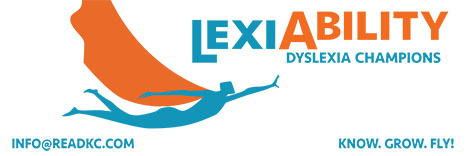
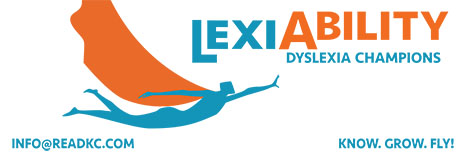
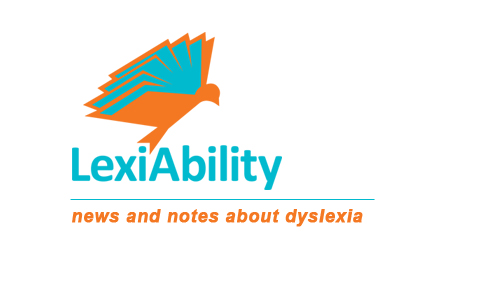



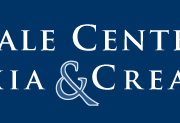
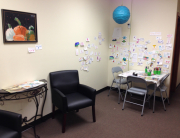
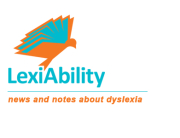
Connect with LexiAbility
RSS
Facebook
Twitter